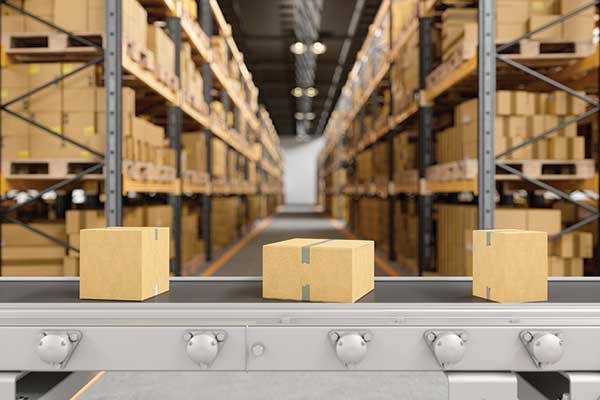Taking the dynamic and ever-evolving logistics and freight transportation landscape into account, the editorial team at Logistics Management has curated a selection of feature stories from 2024 that provide essential insights for the challenges and opportunities ahead in 2025. These articles delve into pivotal topics, including the state of logistics, labor market dynamics, e-commerce innovations, supply chain technology, freight transportation trends, and the growing importance of sustainability and resilience in operations. By revisiting these “must reads,” logistics professionals can gain valuable context and strategies to adapt to shifting economic conditions, technological advancements, and regulatory landscapes, ensuring preparedness for the complexities of the future.

We dig into this influential annual report that offers a snapshot of the American economy via the lens of the logistics sector and its role in overall supply chains. The report concludes that “uncertainty is now a near constant,” and that the smartest way to respond to unsteady times is to “rekindle strategic projects and improve resilience.”

Smart companies are doing everything they can to minimize turnover, improve employee engagement, and maximize the value of their human workforces.

While this year may be a close copy of 2023 in terms of supply chain execution as it relates to e-commerce moves, forecasting is more precarious. The instability and conflict have no upside, only more disruption—which inevitably leads to service and cost impacts across the board.

The Annual Study of Logistics and Transportation Trends highlights the growing importance of technology adoption, talent management, and automation in logistics operations while emphasizing the need for continuous training and addressing the ongoing labor crisis.

Three of our top parcel industry sources offer their takes on the most consumer-facing segment of freight transportation and logistics. They say that while market conditions continue to affect how carriers approach the market, shippers are leveraging the benefits of lower package demand in the form of better pricing.

Whether manual, automated or somewhere in between, reverse logistics operations deliver maximum return only with an organized and efficient process. Don’t wait any longer to make your move. So many decisions. So little time. That’s the story of reverse logistics—aka returns.

Like a year ago at this time, truckload market conditions continue to favor shippers. As this year’s panel explains, many elements still need to fall into place in order for carriers to even things out.A shippers’ truckload (TL) market—with low rates and excess capacity—remains intact, leaving the question: How much longer will this remain the situation?

From ever-increasing customer demands to increased operating and finance costs to delivering against the sustainability targets set by the C-suite, the need to go deeper with your third-party logistics provider is not only needed, but necessary to survive in the world of uncertainty in which we all live.

As carrier executives examine negative earnings reports and contemplate the future impact of changing freight demands and surging freight costs, carriers and shippers alike need to keep a close eye on any sudden shifts that could take them off course.

In this annual event, we’ve gathered four top supply chain technology analysts to discuss how some of the latest software, automation, and robotics innovations are being put to work to help logistics professionals streamline their operations to gain ground in 2024.

Our top supply chain software analysts share the TMS trends they believe shippers need to be paying attention to during the coming year. The transportation landscape has become pretty complex over the last couple of years.

Technological solutions and platforms are being rapidly developed and are catapulting the freight forwarding industry into a new era. Today, the forwarding industry is undergoing a digital revolution, and analysts surmise that companies that fail to keep pace with these advancements risk falling behind—and fast.

In light of the current political and economic developments, the mood in the European transport and logistics branch remains somewhat subdued. However, the crises have taught the logistics industry the importance of resilient supply chains—and thus the need for diversification of logistics services.

Cross-border movements are surging as U.S.-based companies seek to shorten supply chains exposed for over-reliance on Far East manufacturing during and after the pandemic. Shippers are advised to plan early to avoid congestion and keep up with every shifting Customs procedure. Amid all the complexity, here’s how to win at cross-border moves.

Yes, warehouse robotics are the biggest thing in automation, but they’re not the only tech to drive efficiencies. Orchestration software, better robot/human collaboration, and the application of computer vision to inventory accuracy all play a role in operational gains.

Autonomous mobile robots are the current leading figure in the move to mobile automation. Their mission is quite simple: Reduce the cost of shipping everything. Rest assured, no matter how many autonomous mobile robots (AMRs) you have already seen, you’ve only scratched the surface. And if that feels a little overwhelming, it’s more than OK. You won’t need therapy.

Two years ago, 40% of companies had no plans to use robots. That number has been whittled down to 8% according to the annual Intralogistics Robotics Survey from Peerless Research Group, MHI and The Robotics Group. The rise of robotics is transforming the industry and helping companies improve efficiency, accuracy and productivity.

Lithium-ion batteries are well past the early adopter stage as they make notable inroads on lead acid. Here’s a look at the reasons why. If your lift truck fleet’s lead acid batteries were replaced by lithium-ion (Li-ion) batteries. Really? Yes, it’s a possibility. A very distinct one, actually.


